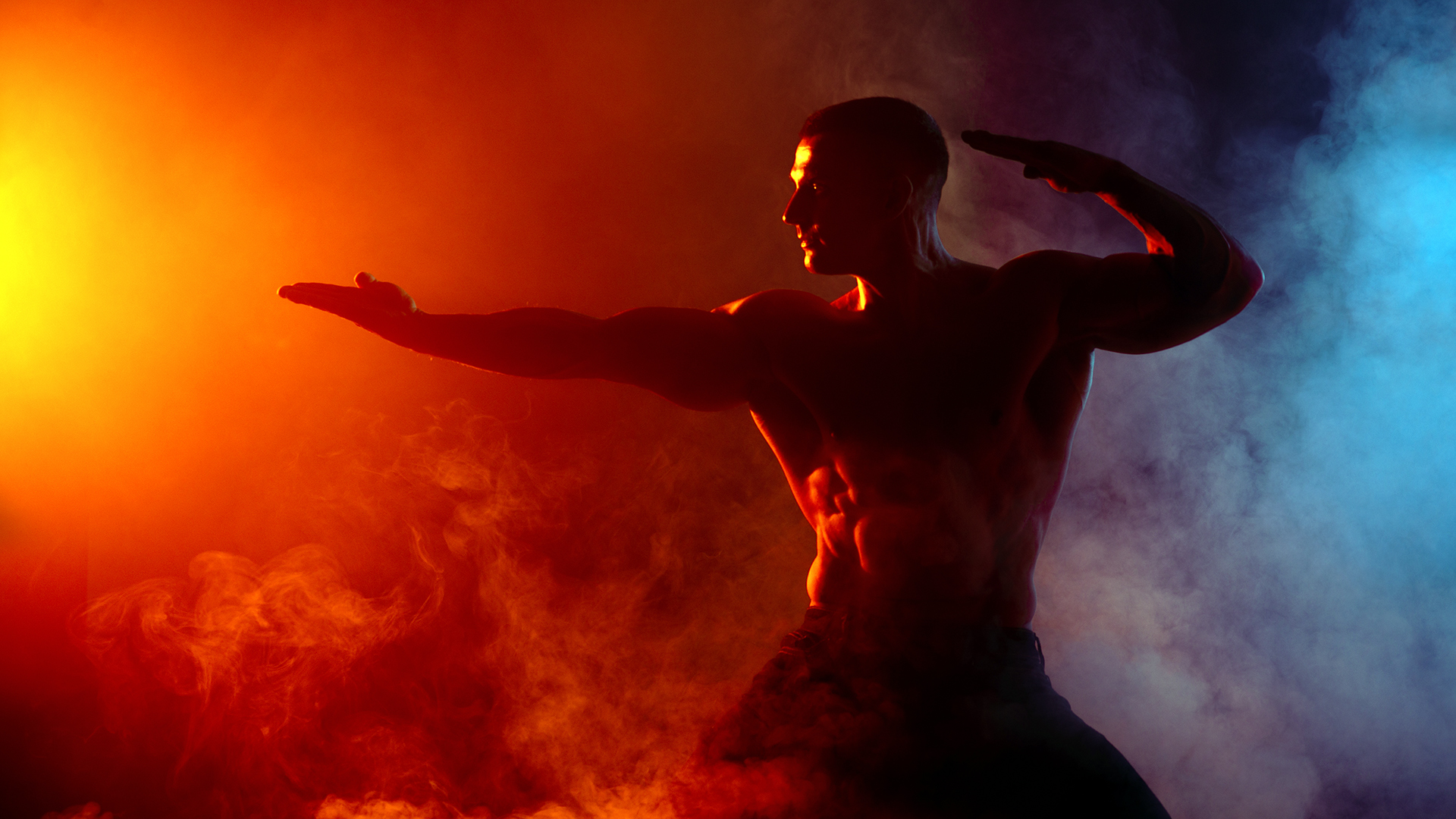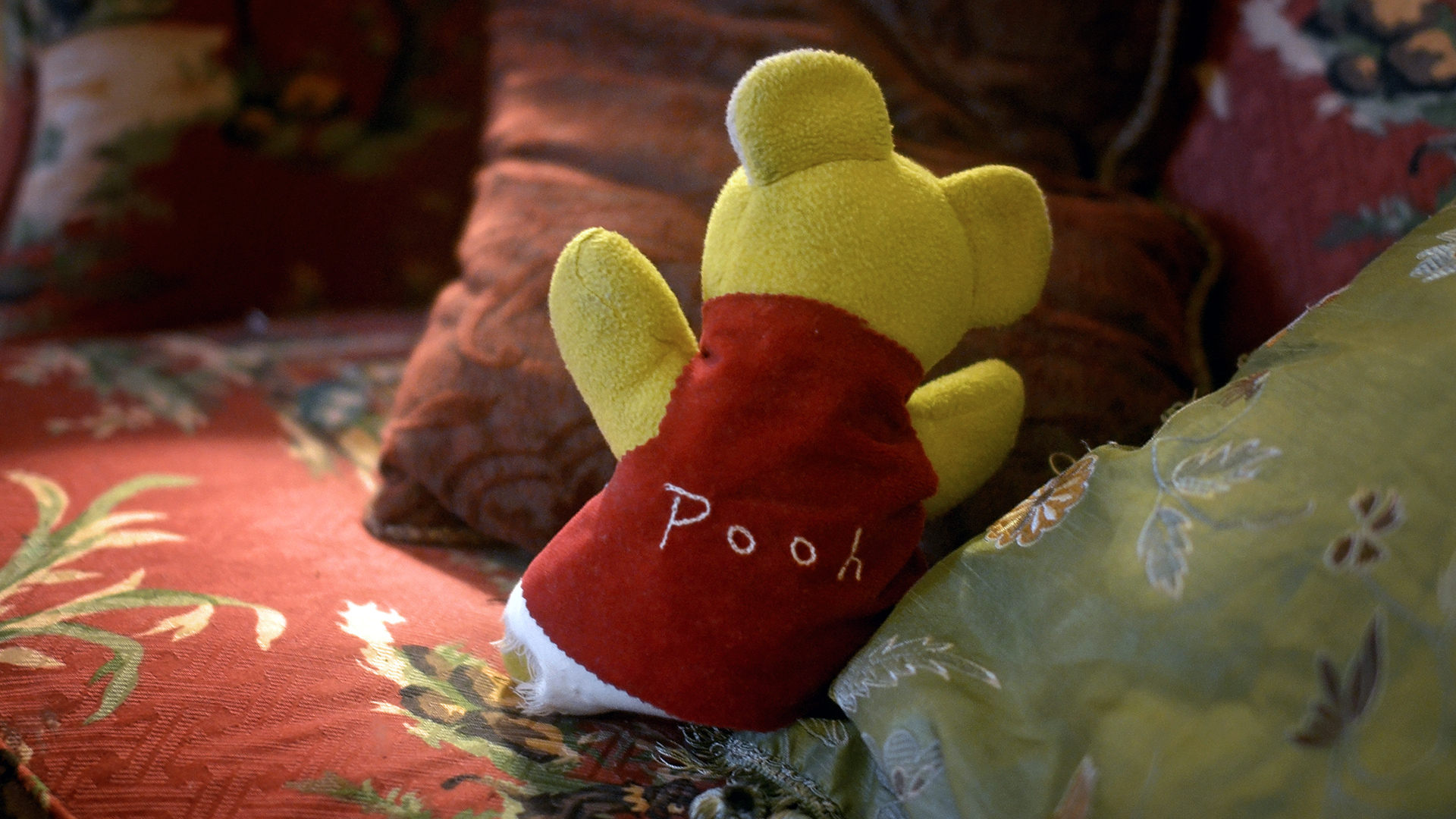
Chippendales, Winnie the Pooh, and Mississippi Corduroy
What he learned as a child in Mississippi left him unable to come out to his family—or even to himself—until he was thirty-one years old.
When I was nine, I wanted to be a stripper.
The future goal of taking off my clothes in public probably fell between fireman and zookeeper. At least it did alphabetically. I don't remember when I first heard of the Chippendales, but I knew exactly what they looked like.
Did my Gen X childhood in Mississippi, 1,000 light years from Vegas, shed clues? Not on the surface, at least. Raised by two WASP parents who taught at the nearby university, I was dutifully christened in the Methodist Church. Each summer, I attended the Vacation Bible School of Heteronormativity, although its idea of “vacation” disillusioned me. In kindergarten, our most exciting field trip was to see the cannulated cow at the nearby veterinary school. But is a cow with a window in its stomach absurd enough to make a nine-year-old want to be a stripper?
A 1980s queer kid, I was so far in the back of the closet that I might as well have found another passage to Narnia. I didn't know that I was in a closet or what “gay” meant, other than a reference to someone who sold flowers and lived alone with thirty cats in a lavender house. My only exposure to anything remotely homoerotic consisted of 1) the Solid Gold Dancers; 2) G.I. Joe; and 3) He-Man, the muscle boy who held aloft a magic sword and proclaimed he “had the power” before transforming into a man wearing a harness, wrist cuffs on both arms, and matching fur briefs and boots like he'd dressed for a circuit party in Puerto Vallarta. Skeletor wasn't the only one obsessed.
“No, Dr. and Mrs. Bateman, don't give your son something gay like a doll house for Christmas. Give him a naked muscle man in a Speedo.”
Nine. Scrawny. Intrigued by a cartoon muscle kink daddy, I built a fortress—a stripper oasis!— out of the mustard yellow cushions from my parents' 1970s corduroy couch. My Winnie the Pooh teddy bear (not an official Pooh, but he shared the same shade of dirty beige-yellow) served as my make-believe bouncer and stage manager. “Pooh” wore a red velvet sleeveless monogrammed vest, as if he were the love child of Freddie Mercury and Dr. Frank N. Furter.
I have crisp memories of my makeshift dance club and its imagined accouterments: music, a disco ball, lights, and a stage where, within the safety of mustard yellow corduroy, I pronounced, “When I'm old, like twenty-six, all these women are gonna stare at me.” As I counted women in the audience (represented by the wales of corduroy), I took off every piece of clothing to imaginary cheers that gave me intense things that I later learned at the fourth grade playground were called “boners.”
I have crisp memories of my makeshift dance club and its imagined accouterments: music, a disco ball, lights, and a stage where, within the safety of mustard yellow corduroy, I pronounced, “When I'm old, like twenty-six, all these women are gonna stare at me.”
One day, during a fabulous performance on that secret stage, I heard a voice cry, “Gotcha!” Then my grandmother extended her elderly hands through the cushions. In electric horror, I clutched my shirt, and pulled my Superman Underoos over my erect penis. I instantly wondered what cardinal sin I had committed in a town where we were already destined to hell because Walmart had just opened on Sundays. I might have wanted a room full of women (and their sons) staring at me, but I did not want my grandmother in that room.

Too traumatized to remember my grandmother’s reaction, I curled up in shame, believing that I was going to hell three times: once for taking off my clothes, twice for loving it, and a third time for hurting my grandmother's feelings.
My childhood included other fantasies, from imaginary friends on a planet with twelve moons to a talking rat who flew a spaceship. Sometimes, I pretended to be a mermaid.
We didn’t have a pool, so I’d strip and wrap my body with a long sheet to create a tail. The floor transformed into an ocean where I would flop and swim/crawl across the house. The secret life of a latchkey kid. Even my childhood best friend didn’t know.
Despite a childhood imagination that bent every concept, I still didn't know I lived in a closet until I was thirty, married, and had already left Mississippi. How did a nine-year-old, who dressed for Sunday School in khakis, a fitted navy blue blazer, and a clip-on tie want to be a stripper? Did other kids want to take their clothes off for a living? Did I have some unseen lumberjack fairy gogo-uncle named Colt? If so, why didn't Pooh spill the tea?
I conformed to the status quo. I questioned nothing critical—neither race, gender, orientation, nor class—lest it crack the bank-vault walls of my closet.
My coming-out story is full of misdirected detours. As the Christianity I learned in Mississippi slowly made me hate myself, my own homophobia came to light, including a very adverse response the first time another guy hit on me. I was seventeen. He was, perhaps, in his early twenties. A professional hockey player. When he first showed interest in me, the validation felt amazing. When he made his pass, I drunkenly ran to my friends, bawling. Natasha, someone I knew casually and peripherally, calmed me with a hug. Someone told the guy to leave (he did). More than the brief pass and the fact that someone saw through me, what lingers now is the shame that I vomited on the spot. Today, I want to believe this hockey player eventually found his own truth and peace, and, despite his highly questionable decision, he was driven by my same need for acceptance that I had.
Quite simply, I'd met myself in a mirror. So I drowned that person with booze. I ran away by staying in place, giving up a fantastic scholarship at a first-rate university to attend a different school where I would coast and endeavor to "fit in.” I conformed to the status quo. I questioned nothing critical—neither race, gender, orientation, nor class—lest it crack the bank-vault walls of my closet.
Perhaps there is truth in the idea that whatever bothers me in someone else reflects something I don't like inside of me. Decades later, I'm still un-learning who I was then and learning who I am now.
Pre-Will & Grace, pre-Ellen, queer characters (if they appeared at all) felt theatrical and camp, covert and stereotyped, or lonely, criminal, and outcast. A lack of understanding fueled homophobia: “homosexuality” had only been removed from the mental health profession’s diagnostic manual in 1973 and would not be removed from the International Classification of Diseases by the World Health Organization until 1990. I remember derogatory jokes from comedians of that era. I also remember the fraternity brother who, in the early ’90s, engaged in a personal witch hunt for anyone he thought of as gay. He admitted to fabricating lies to force guys to leave the fraternity, and scoured yearbooks to see who had joined which clubs and might, therefore, be gay. While he spent way too much time obsessing about others' closets, I quietly waited out the bullying from the sidelines, desperately wanting to fit in.
Accounting for my journey feels like looking backward across light years into another galaxy. Foreign and distant, time is folded as if everything happened all at once. In some points, I don't recognize myself; in others, old scars remain tender. Sometimes, I find moments—like my childhood fantasies—where I “should have known.”
But how do we know before we know?
My catalog of memories never made sense until after I came out. I remember being told “don't talk with your hands like that” yet never understanding what “that” meant. I was called “ninny” and “sissy” and a “goody-two-shoes.” Crying was not permissible: I had to “shape up” or ”stop blubbering”—even the day after my great-grandmother’s funeral. Over the years, I learned to hold back. Far removed from that restriction, I remain physically unable to cry for more than two or three seconds at a stretch.
I was called “ninny” and “sissy” and a “goody-two-shoes.” Crying was not permissible: I had to “shape up” or “stop blubbering”—even the day after my great-grandmother’s funeral.
Surely, the adults in my youth knew I was a queer kid and had tried to “groom” me straight—which is, of course, utterly impossible to do (in either direction).
When I finally came out, my mom first responded, “Well, I do think it's biologic and genetic.” Then, she listed various family members whom she'd "always suspected" were gay. While it had taken me thirty-one years to reach this moment, I watched her rapidly process the news with a whirling mix of curiosity, tears, and bewilderment. Meanwhile, my father never said a single word, while my stepmother asked a single question: was I happy and at peace? The pièce de résistance was a direct question from Mom: “What do you miss in relationships with women that you think you'll get from men?” It took every tendon in my body not to collapse in laughter as I thought, “Don't say penis, don't say penis, don't say penis.”
Of course, queerness is so much more than a body part or childhood make-believe. As I watched the conversation in Netflix’s series Heartstopper when teenage rugby star Nick Nelson (played by Kit Connor) comes out as bisexual to his mother Sarah (played by Olivia Colman, who couldn't stop crying during rehearsal), I remembered my own beautiful moments with Mom. Over time, the elephant left the room, and she embraced me. She even tried—awkwardly but endearingly—to set me up with a former student of hers. As my mother told me about this “really creative and cute” designer, something prompted me to ask, “Is he even gay?” Mom responded without hesitation: “Well, I don't know, but he likes nice things!”
If it were only that simple.
Acceptance is, however, that simple. Lifelong friends and cousins never wavered. Pastors and teachers and coworkers and neighbors are more interested in my character and happiness than the gender of whomever I love. Mom now wants to know when I’m seeing anyone: she wants a son-in-law. Regardless of what a politician, a judge, or a bigot says, writes, or thinks about me, I am worthy, as I am.
There are parallels between ’80s homophobia and today's pearl-clutching politicians and preachers who fuel hate in the name of their versions of “God” and “family values.” When mayors attempt to withhold funds over LGBTQ+ library books in direct violation of the First Amendment, when Florida prohibits educators from teaching young students about LGBTQ+ lived experiences, when politicians want to prohibit critical thinking in schools on issues like race, when the Supreme Court strikes at the right to privacy in a way that, according to Justice Clarence Thomas, extends far beyond abortion, I remind myself that history is a marathon. It progresses forward over long stretches.
Mom now wants to know when I’m seeing anyone: she wants a son-in-law. Regardless of what a politician, a judge, or a bigot says, writes, or thinks about me, I am worthy, as I am.
That progress can mean my coming-out story doesn't have to be someone else's. “Love your neighbor” can and should be more than a catchphrase that makes folks feel good on Sunday mornings. It becomes a clear directive that demands critical thinking and intense self-awareness.
In a world of swiping left and right on apps, perhaps progress also means we haven't fully lost the human magic of getting to know someone through the stunningly beautiful awkwardness of conversation and body language and internal debates and uncertainties: Do they like me? Do they want to know me? It's the fundamental notion: am I worthy, as I am?
The answer is yes. Always yes. A resounding yes.
I no longer need to unpack my childhood stripper fantasy. I can simply enjoy heading out for a night of dancing under a disco ball and lasers, covered in glitter, where I can take off my shirt (or not) and strut and shake without hiding in shame. At least now, at fifty-one, I have better taste than to buy a corduroy sofa.
And I own a much better harness than He-Man or Skeletor.
About the author
John W. Bateman writes and looks for stories from the Deep South. His work has appeared in the Chicago Tribune,The New Southern Fugitives, Electric Literature, Facing South, The Santa Fe Writers Project Quarterly, and on the silver screen. He has a not-so-secret addiction to glitter and, contrary to his Southern roots, does NOT like sweet tea. His first novel, Who Killed Buster Sparkle? (Unsolicited Press), was nominated in 2020 for the Mississippi Institute of Arts & Letters Award in Fiction and recipient of the 2019 Screencraft Cinematic Book Award. John received his MFA in writing from the School of the Art Institute of Chicago and is a 2023 Pulitzer Center Reporting Fellow. He is currently a 2023-24 Watson Brown Fellow in the Southern Studies Fellowship in Arts & Letters in Spartanburg, South Carolina.


